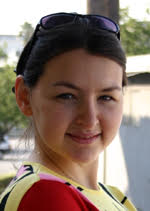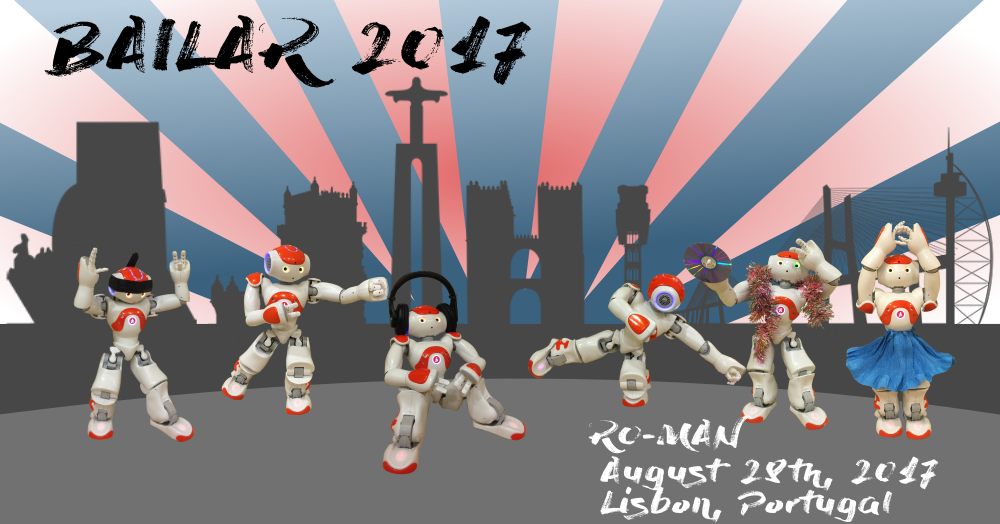Program
Keynote Speakers

John John Cabibihan received the Ph.D. degree in bioengineering, with specialization in biorobotics, from the Scuola Superiore Sant’Anna, Pisa, Italy, in 2007. Concurrent with his Ph.D. studies, he received an international scholarship grant in 2004 from the Ecole Normale Supérieure de Cachan, France. Therein, he spent one year with the Laboratoire de Mécanique et Technologie. From 2008 to 2013, he was an Assistant Professor at the Electrical and Computer Engineering Department, National University of Singapore, where he also served as the Deputy Director of the Social Robotics Laboratory and an Affiliate Faculty Member of the Singapore Institute of Neurotechnologies. He is currently an Associate Professor at the Mechanical and Industrial Engineering Department, Qatar University. He is Lead/Co-Lead Principal Investigator of several projects under the National Priorities Research Program of Qatar Foundation’s National Research Fund. He mentored the teams that won consecutive 1st Prizes at the 2014, 2015 and 2016 Microsoft Imagine Cup (Innovation Category; Qatar National Finals). He serves on the Editorial Boards of the International Journal of Social Robotics, the International Journal of Advanced Robotics Systems, Frontiers in Bionics and Biomimetics, Frontiers in Special Education Needs, and Computational Cognitive Science. He was the General Chair of the 6th IEEE International Conference on Cybernetics and Intelligent Systems (Manila, 2013), Program Chair of the International Conference on Social Robotics (ICSR) 2012 in Chengdu, China, and ICSR 2016 in Kansas City, USA, and Program Co-Chair of ICSR 2010 (Singapore) and ICSR 2017 (Tsukuba, Japan). Over the years, his work has been focused toward assistive and social robotics for the therapy of children with autism, lifelike prosthetics, bioinspired tactile sensing, and human-robotic touch and gestures. His works have been featured by the BBC, MIT Technology Review, Popular Science, and at the front pages of The Peninsula Qatar.

Kerstin Dautenhahn, Senior Member IEEE, is Professor of Artificial Intelligence in the School of Computer Science at University of Hertfordshire in U.K. where she coordinates the Adaptive Systems Research Group. She has published more than 300 research articles. Prof. Dautenhahn has edited several books and frequently gives invited keynote lectures. She has been Principal Investigator of her research team in several European, nationally and internationally funded projects. Prof. Dautenhahn is a Founding Editor in Chief of the journal Interaction Studies: Social Behaviour and Communication in Biological and Artificial Systems, as well as Associate Editor of Adaptive Behaviour (Sage Publications), the International Journal of Social Robotics (Springer), IEEE Transactions on Affective Computing and the IEEE Transactions on Autonomous Mental Development.

Adriana TAPUS is a Full Professor at ENSTA-ParisTech since May 2009. She received her PhD in Computer Science from Swiss Federal Institute of Technology, Lausanne (EPFL) in 2005 and her degree of Engineer in Computer Science and Engineering from "Politehnica" University of Bucharest, Romania in 2001. She worked as an Associate Researcher at the University of Southern California (USC), where she mainly worked on socially assistive robotics, human sensing, and human-robot interaction. Her main interest is on long-term learning (i.e., in particular in interaction with humans) and on-line robot behavior adaptation to external environmental factors. She received the Romanian Academy Award for her contributions in assistive robotics in 2010. She is Associate Editor of many high-rank journals in robotics, she was the General Chair of ICSR 2015 conference, she is the Program Chair of HRI 2018 conference and General Chair for HRI 2019 conference. In 2016, Prof. Tapus was one of the 25 women in robotics you need to know about, ranking done by Robohub. She is also involved in many national and EU H2020 international research projects.
Program
- 09:00-09:10 Opening
- 09:10-09:50 Invited Speaker - Kerstin Dautenhahn, University of Hertfordshire Companion robots in therapy and home assistance [Abstract]
- 09:50-10:30 1st Workshop Session
- “Combining artificial curiosity and tutor guidance for environment exploration” Pierre Fournier, Olivier Sigaud and Mohamed Chetouani [Abstract] [PDF]
- “The Influence of Transparency and Adaptability on Trust in Human-Robot Medical Interactions” Leon Bodenhagen, Kerstin Fischer and Hanna Mareike Weigelin [Abstract] [PDF]
- 10:30-11:00 Coffee Break
- 11:00-11:40 Invited Speaker - John-John Cabibihan, University of Qatar Closing the Loop: How Social Robots and Wearable Sensors could be used for Mitigating Unwanted Behaviors during Meltdowns in ASD [Abstract]
- 11:40-12:30 2nd Workshop Session
- “Deep Reinforcement Learning using Symbolic Representation for Performing Spoken Language Instructions” Mohammad Ali Zamani, Sven Magg, Cornelius Weber and Stefan Wermter [Abstract] [PDF]
- “User Activity Aware Support System Using Activity Frame” Nicholas Melo and Jaeryoung Lee [Abstract] [PDF]
- “Combining LSTM and GMM for Novelty Detection in Activities of Daily Living” Luigi Bove and Silvia Rossi [Abstract]
- 12:30-14:00 Lunch Break
- 14:00-14:40 Invited Speaker - Adriana Tapus, Robotics and Computer Vision Lab, ENSTA-ParisTech Challenges in Running Long-Term Studies and Adapting Robot's Behavior [Abstract]
- 14:40-15:30 3rd Workshop Session
- “A Robotic Companion for Dolphin Therapy among Persons with Cognitive Disability” Eleonora Aida Beccaluva, Francesco Clasadonte, Franca Garzotto, Mirko Glesomini, Francesco Monaco and Leonardo Viola [Abstract] [PDF]
- “Human aware natural handshaking with tactile sensors in Vizzy the social robot” João Avelino, Tiago Paulino, Carlos Cardoso, Plinio Moreno and Alexandre Bernardino [Abstract] [PDF]
- “Embodied Robotic Visualization of Autistic Child Behaviors with Varying Severities” Kim Baraka, Francisco S. Melo and Manuela Veloso [Abstract] [PDF]
Our research addresses persons with Cognitive Disability (CD) and aims at developing social robots to support new forms of interventions for this target group. The paper described a “smart” stuffed dolphin called Sam designed to engage subjects with CD in a variety of tasks inspired by the practice of Dolphin Therapy (a special form of Pet Therapy). Sam emits different stimuli (sound, vibration, and light) with its body in response to user manipulation. Its behaviour is integrated with lights and multimedia contents displayed in the ambient (animations, videos, and 3D virtual spaces) and can be customized by therapists to address the specific needs of each person with CD.Handshaking is a fundamental part of human physical interaction that is transversal to various cultural backgrounds. It is also a very challenging task in the field of Physical Human-Robot Interaction (pHRI), requiring compliant force control in order to plan for the arm’s motion and a confident but at the same time pleasant grasp of the human user’s hand based on tactile sensing. In this paper we focus on the second challenge and perform a set of physical interaction experiments between twenty human subjects and Vizzy, a social robot whose hands are instrumented with tactile sensors that provide skin-like sensation. From these experiments, we (i) learn the preferred grip closure according to each user group (ii) analyze the tactile feedback provided by the sensors for each closure. In additionto the robot-human interactions, Vizzy executed handshake interactions with inanimate objects in order to (iii) detect if it is handshaking with a human or with an inanimate object. This work adds physical human-robot interaction to the repertory of social skills of Vizzy, fulfilling a demand previously identified by many users of the robot.The goal of this work is to enable interactions with a humanoid robot that can be customized to to exhibit different behaviors typically observed in children with Autism Spectrum Disorders (ASD) of different severities. In a first step, we design robot behaviors as responses to three different stimuli, inspired by activities used in the context of ASD diagnosis, based on the Autism Diagnosis Observation Schedule (ADOS-2). A total 16 robot behaviors were designed and implemented on a NAO robot according to different autism severities along 4 selected ADOS-2 features. In a second step, we integrate those behaviors in a customizable autonomous agent with which humans can interact through predefined stimuli. Robot customization is enabled through the specification of a feature vector modeling the behavioral responses of the robot, resulting in 256 unique customizations. This work paves the way towards potentially novel ways of training ASD therapists, as well as interactive solutions for educating people about ASD in its different forms. - 15:30-16:00 Coffee Break
- 16:00-17:00 4th Workshop Session
- “A ”Hybrid” Personalized Model for Collaborative Human-Robot Object Manipulation” Maren Röttenbacher and Andreas Riener [Abstract] [PDF]
- “Will humans adapt to the movement of humanoid robots?” Fabio Vannucci, Alessandra Sciutti, Marco Jacono, Giulio Sandini and Francesco Rea [Abstract] [PDF]
- “Robots Should Respect Your Feelings as Well - Adapting Distance between a Robot and a User based on Expressed Emotions” Markus Bajones, Michael Zillich and Markus Vincze [Abstract] [PDF]
- “How does the robot feel? Annotation of emotional expressions generated by a humanoid robot with affective quantifiers” Mina Marmpena, Angelica Lim, and Torbjørn S. Dahl [Abstract] [PDF]
- “Development of a Kinematic Model based on Bezier Curves for Improvement of Safe Trajectories in Active Orthosis Walking Tasks” Valber C.C. Roza, Kassio J.S. Eugenio, Vanessa G.S. Morais, Pablo J. Alsina and Marcio V. de Araujo [Abstract] [PDF]
- 17:00-17:10 Closing Remarks
